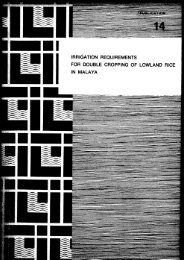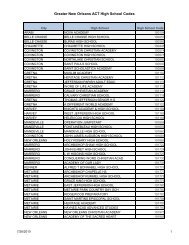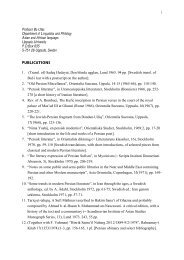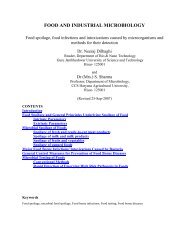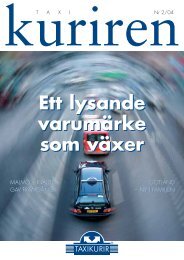On the Future of Indigenous Traditions - Munin
On the Future of Indigenous Traditions - Munin
On the Future of Indigenous Traditions - Munin
You also want an ePaper? Increase the reach of your titles
YUMPU automatically turns print PDFs into web optimized ePapers that Google loves.
(culture) and all capitals <strong>of</strong> internally heterogeneous British Indian provinces,” with<br />
<strong>the</strong>ir “regional and local variations in all spheres <strong>of</strong> cultures tended to be neglected<br />
[though having] widest possible communalities. Also neglected were <strong>the</strong> most sacred<br />
but esoteric Vedas, <strong>the</strong> speculative Upanishads, and <strong>the</strong> limitless variety <strong>of</strong> puranas.<br />
Certain parts <strong>of</strong> <strong>the</strong> popular epic literature, and particularly one ethical text from <strong>the</strong><br />
Mahabharata – <strong>the</strong> Bhagavad-Gita – were exalted beyond <strong>the</strong> hundreds <strong>of</strong><br />
contending holy books. The Gita gained some thing like <strong>the</strong> status <strong>of</strong> a unified Hindu<br />
‘Bible’ where none had existed before.” 19 These holy books are one important set <strong>of</strong><br />
sources, conditioned to its objective interpretation for investigation.<br />
According to S.C. Roy, in <strong>the</strong>se set <strong>of</strong> sources, whatever may have been <strong>the</strong> name <strong>of</strong><br />
ancient India before <strong>the</strong> Aryan Hindus found <strong>the</strong>ir way into <strong>the</strong> country, he says, that<br />
<strong>the</strong> “Hindus legends concur with <strong>the</strong> traditions <strong>of</strong> <strong>the</strong> Mundas <strong>the</strong>mselves in locating<br />
this people and o<strong>the</strong>r Kolarian tribes in north-western India, when <strong>the</strong> worshipers <strong>of</strong><br />
Brahma stepped on <strong>the</strong> threshold <strong>of</strong> <strong>the</strong> country.” 20 The traditions <strong>of</strong> <strong>the</strong> Mundas<br />
<strong>the</strong>mselves concur with various statements in <strong>the</strong>se ancient Sanskrit works in<br />
suggesting that <strong>the</strong> Mundas and o<strong>the</strong>r cognate tribes occupied Nor<strong>the</strong>rn India before<br />
<strong>the</strong> forefa<strong>the</strong>rs <strong>of</strong> <strong>the</strong> Hindus entered <strong>the</strong> country. 21 The woods and valleys by <strong>the</strong> side<br />
<strong>of</strong> <strong>the</strong> ancient Drisadwati and Saraswati River appears to have rung with <strong>the</strong><br />
Bacchanalian songs or durangs <strong>of</strong> <strong>the</strong> Mundas and o<strong>the</strong>r allied tribes long before <strong>the</strong><br />
venerable Arya Rishis <strong>of</strong> old chanted <strong>the</strong>ir sonorous Vedic hymns on <strong>the</strong>ir sacred<br />
banks. 22 (See Map 2 on page 113 <strong>the</strong> Indus Valley Civilization 2600-1700 BC)<br />
As an illustration, if we take <strong>the</strong> hymns in <strong>the</strong> Rig-Veda – <strong>the</strong> ancient Hindu<br />
Scriptures, <strong>the</strong> fair skinned Aryan warriors invoking <strong>the</strong> aid <strong>of</strong> <strong>the</strong>ir bright and<br />
beneficent gods against those and o<strong>the</strong>r black races who long and strenuously fought<br />
19<br />
Clifford Geertz, Old Societies and New states, The quest for modernity in Asia and Africa (New<br />
York: The Free Pess, 1967), 32.<br />
20<br />
S.C. Roy, Mundas and Their Country (Ranchi: Catholic Press, [1912], 1995), 13.<br />
21<br />
Ibid., 13.<br />
(The passage in <strong>the</strong> Vishnu Puran (I 5, 28-32), which describes <strong>the</strong> Asuras as <strong>the</strong> first born <strong>of</strong><br />
Brahman, from who’s thigh <strong>the</strong>y sprang, and <strong>the</strong> similar statement in Mahabharata (Santi Pava 84) that<br />
<strong>the</strong> Asurs were elder bro<strong>the</strong>rs <strong>of</strong> <strong>the</strong> Gods, - and <strong>the</strong> fur<strong>the</strong>r statements in Tittiriya Upanishads (VI.2)<br />
that <strong>the</strong> earth formally belonged to Asuras while <strong>the</strong> gods had only as much as a man can see while<br />
sitting have been supposed by Muir and o<strong>the</strong>r Orientalists as referring to <strong>the</strong> former occupation <strong>of</strong> <strong>the</strong><br />
country by <strong>the</strong> black aboriginals. And <strong>the</strong> German Orientalist points Weber (Ind. Stud I, 18., II, 243)<br />
points out that <strong>the</strong> ‘Devas’ and ‘Asuras’ <strong>of</strong> ancient Sanskrit literature referred to <strong>the</strong> broad divisions <strong>of</strong><br />
Indian population, as “…<strong>the</strong> fair skinned sacrificing Aryans and <strong>the</strong> godless black aboriginals…”<br />
22<br />
Ibid., 13.<br />
28





